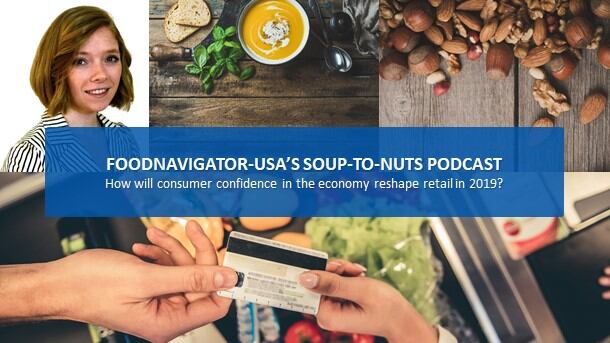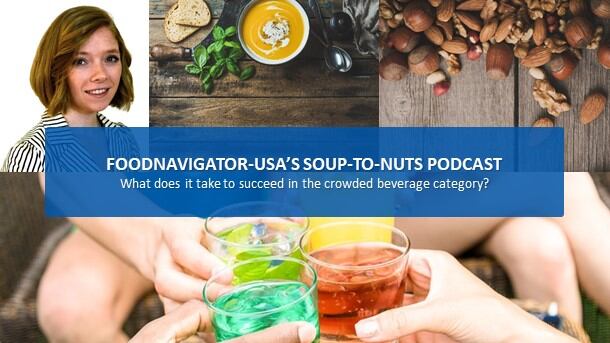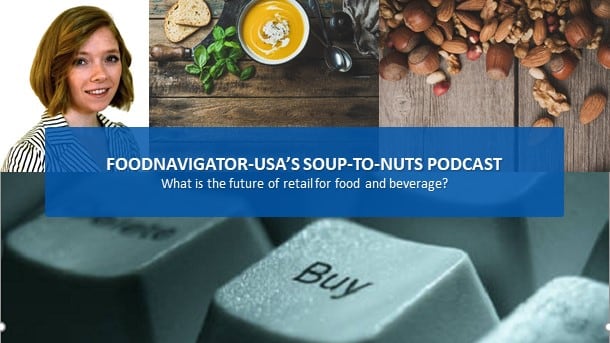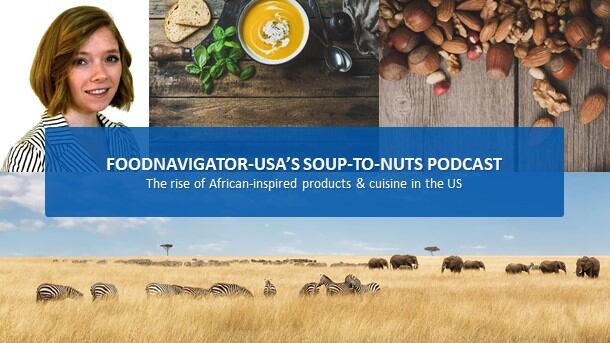According to the full service CPG sales and marketing agency Acosta, rising consumer confidence in the economy in 2019 will spur sales of more premium products that many shoppers turned away from in 2008 when the recession began. This will include products that are healthier, made with more expensive organic, natural and functional ingredients, as well as items that offer added convenience.
In addition to seeking more premium products, many consumers are seeking more premium shopping experiences both in-store and online.
In this episode of FoodNavigator-USA’s Soup-To-Nuts Podcast, Acosta Strategic Advisor John Clevenger walks us through how these evolving demands will continue to reshape the retail shopping experience and influence which products succeed at market.
The economic landscape
Ten years may seem like a long time ago, but for those who were struck the hardest by the housing collapse and the domino effect it had on the economy in 2008 the road to recovery has been long. But Clevenger suggests that many people are finally at a point where they can spend money more liberally without thinking of the impact of every penny.
“The past few years have been challenging for the industry. We had a period of recession that goes back more than a few years. Then we had a period of deflation. There has been a lot of consolidation of the industry. But I am predicting a pretty positive year next year for both retailers and manufacturers,” he said.
“I get the sense that consumers are feeling a little bit more confident with their pocketbooks and more likely to make choices towards more premium items. And premium can be just an upgraded version of something they normally buy, or it can be a more natural or organic or specialty ingredient item,” he said, adding, “I think people are feeling more comfortable making those expenditures.”
As consumers level up, he predicts, manufacturers will be able to take more price in the market without too much pushback from retailers.
What are consumers going to buy?
While consumers may be willing to spend more, they are not willing to spend more on just anything. Rather, Clevenger says they are looking for products that offer a higher value – whether that be health or convenience.
He explained that shoppers will seek out more natural and organic products and buy from brands that are transparent about where their ingredients come from.
“The other thing that is going on is there is a continuing shift away from preparing your own food from scratch,” and consumers are willing to pay more for this added convenience whether it be fully prepared meals from the steam tray at the grocery store or partially prepped meal kits delivered to their doors, he said.
Manufacturers will continue to mix-up their portfolios
Manufacturers and retailers will navigate these changes two ways. One, some will offer only more premium products and services, and two, some – particularly larger CPG companies and retailers – will expand their portfolios to include premium and conventional lines.
Another element of this trend that already is playing out, but which likely will increase in 2019, is big food CPGs rationalizing product mix and acquiring relevant challenger brands in order to better meet consumers’ shifting preferences, according to Clevenger.
He notes that even while large companies buy up smaller ones, new players will continue to enter the market so that competition and innovation remain fresh.
As this new crop of products and companies emerge they are placing increased pressure on manufacturers managing iconic brands. While large CPG companies may be able to renovate some of these brands to remain relevant, others inevitably will end up on the chopping block.
But as Clevenger notes this isn’t necessarily a bad thing.
“Those brands tend to find new homes” where they receive the TLC they need to thrive, he said. “I am always interested in seeing, let’s call them heritage brands or call them legacy brands, that knew success 20-30 years ago and then may have faded away, but are making a resurgence right now. We have seen that going for the past 15 years when some of these regional heritage brand shoppers are rediscovering them for their authenticity, their uniqueness. To a new generation of shoppers coming in, these are new brands that they hadn’t experienced before,” he noted.
Retailers will refine omnichannel shopping
Consumers aren’t just changing what they are buying, they are changing where and how they are buying food and beverages as well.
As such, Clevenger expects retailers in 2019 to focus on creating a more streamlined and higher quality omnichannel shopping experience – a task that he says is not one to undertake lightly.
“There is a universal understanding you need to be able to play and have a presence where your shoppers are looking for information. So, omnichannel doesn’t necessarily mean you compete in every single channel of distribution for you products, but I think what people are trying to come to grips with and what they are trying to create is a situation where no matter where the shopper or consumer interacts with your brand” they have a consistent and enjoyable experience, he said.
That is not easy, he added. It requires companies consider what are their beliefs, what they stand for, and their equities and then ensuring those come through clearly across phones, laptops and in stores.
Clevenger says the food and beverage industry is still in the early stages of creating an omnichannel shopping experience, which means a lot of experimenting but not necessarily any clearly winning strategies yet. But, he predicts, that click & collect could be an early front runner in 2019 because it plays to retailers’ existing strengths.
Brick & mortar stores must up their game in 2019
Where the extra staging space for click & collect programs comes from will significantly increase competition among manufacturers that vie for increasingly limited shelf space. In particular, Clevenger predicts products stocked in the center of the store will feel the pinch.
“There is pressure on the center store. That store will vary from category to category. There are some categories that are probably easier to trim assortments without affecting the category performance. There are some categories that are already migrating to some sort of ecommerce enabled delivery … but it is a bit of a puzzle, because the center store is certainly shrinking,” he said.
At the same time, he notes many stores have already renovated their parameters and are happy with their mix – especially considering many high profit items reside in the center of the store.
Either way, Clevenger suggests retailers improve the performance of their center stores by improving their navigation so that consumers can more easily find what they want quickly or see items that remind them to purchase other items that might not be on their list.
He also recommends retailers and manufacturers improve consumer education and exploration of the center store so that shoppers know what they should be looking for, such as when it is better to buy a premium item or a mainstream alternative.
Other strategies to improve the in-store experience that Clevenger predicts retailers will employ more in 2019 and beyond include elevating in-store eating areas and prepared food options; increasing sampling, education and entertainment and offering additional services, such as health care.
Each of these changes likely will cause a ripple effect, making it difficult to predict their full impact. Similarly, since it is so early in the development cycle for many of these changes it is hard to know which ones will gain traction and which ones will be abandoned. The only way to fully know what will happen is to wait and watch, he said.




